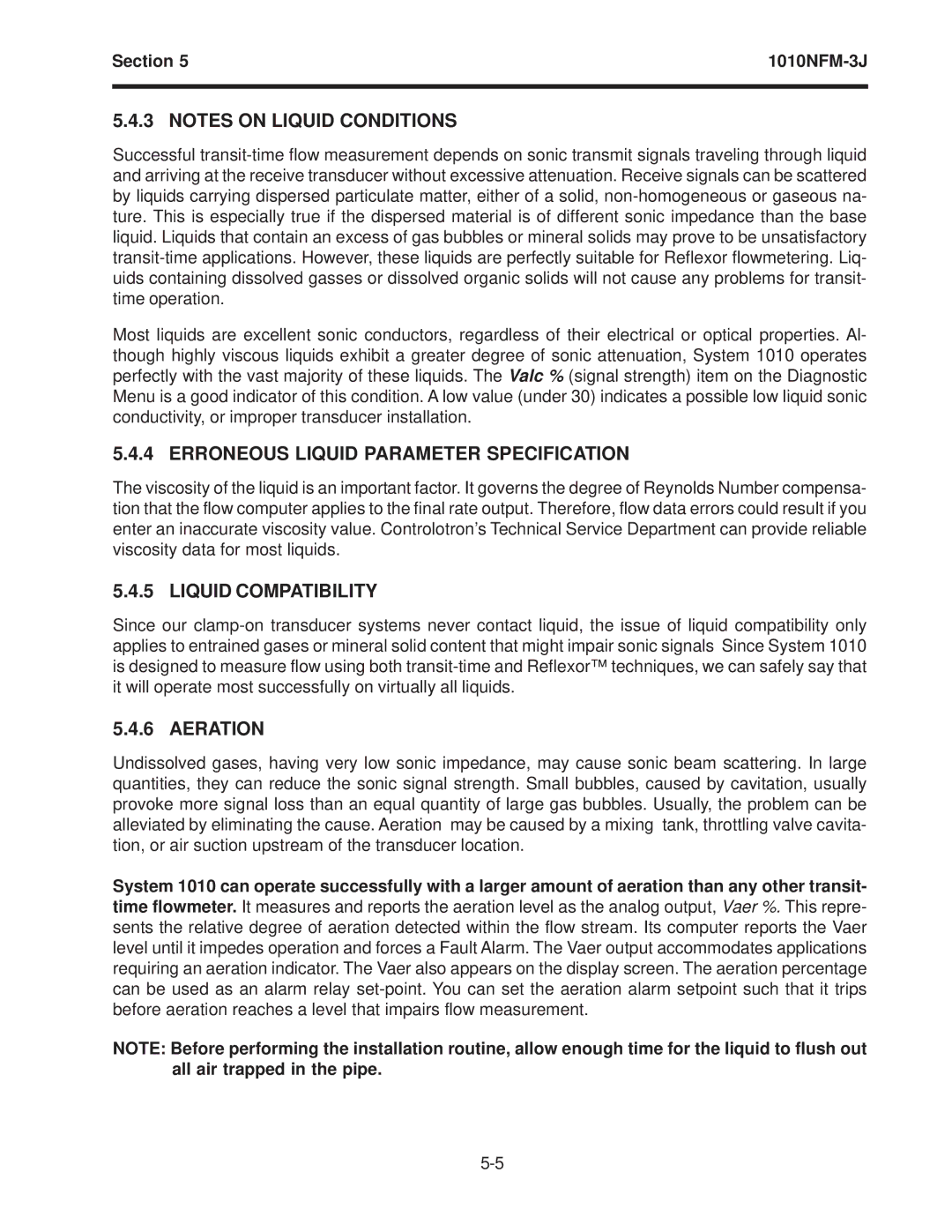Section 5 | |
|
|
5.4.3 NOTES ON LIQUID CONDITIONS
Successful
Most liquids are excellent sonic conductors, regardless of their electrical or optical properties. Al- though highly viscous liquids exhibit a greater degree of sonic attenuation, System 1010 operates perfectly with the vast majority of these liquids. The Valc % (signal strength) item on the Diagnostic Menu is a good indicator of this condition. A low value (under 30) indicates a possible low liquid sonic conductivity, or improper transducer installation.
5.4.4 ERRONEOUS LIQUID PARAMETER SPECIFICATION
The viscosity of the liquid is an important factor. It governs the degree of Reynolds Number compensa- tion that the flow computer applies to the final rate output. Therefore, flow data errors could result if you enter an inaccurate viscosity value. Controlotron’s Technical Service Department can provide reliable viscosity data for most liquids.
5.4.5 LIQUID COMPATIBILITY
Since our
5.4.6 AERATION
Undissolved gases, having very low sonic impedance, may cause sonic beam scattering. In large quantities, they can reduce the sonic signal strength. Small bubbles, caused by cavitation, usually provoke more signal loss than an equal quantity of large gas bubbles. Usually, the problem can be alleviated by eliminating the cause. Aeration may be caused by a mixing tank, throttling valve cavita- tion, or air suction upstream of the transducer location.
System 1010 can operate successfully with a larger amount of aeration than any other transit- time flowmeter. It measures and reports the aeration level as the analog output, Vaer %. This repre- sents the relative degree of aeration detected within the flow stream. Its computer reports the Vaer level until it impedes operation and forces a Fault Alarm. The Vaer output accommodates applications requiring an aeration indicator. The Vaer also appears on the display screen. The aeration percentage can be used as an alarm relay
NOTE: Before performing the installation routine, allow enough time for the liquid to flush out all air trapped in the pipe.
